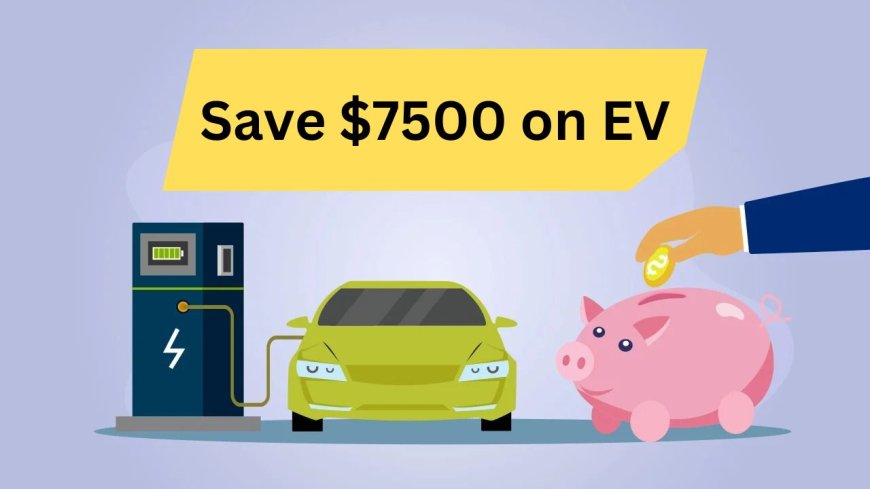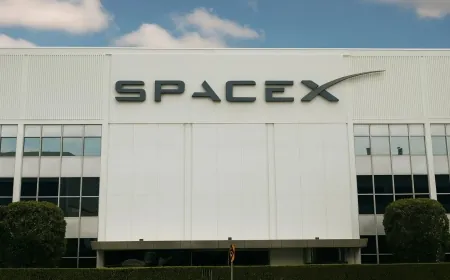New EV Tax Credit 2023: List of Electric Vehicle Models Eligible for Up to $7,500 in New Tax Credits- Updated
In this article you will know about the New EV Tax Credit Rules and Eligible EV Models-Lates updates as of august 2024

The US Treasury Department has announced the eligible electric vehicle (EV) models that qualify for the new tax credits. Although fewer models are eligible compared to previous years, some of the most popular EVs still qualify. The new rule allows consumers to receive up to $7,500 in tax credits on eligible EVs.
Seventeen new EV models and some of their variations qualify for all or half of the new credit, while eight models - mostly foreign-made vehicles - are no longer eligible for now. The majority of eligible cars are manufactured by the "big three" EV automakers in the US - Ford, General Motors, and Stellantis - along with Tesla.
The following electric vehicle models are currently eligible for the new tax credit:
-
2022-2023 Chrysler Pacifica PHEV -
2022-2023 Jeep Wrangler PHEV 4xe -
2022-2023 Jeep Grand Cherokee PHEV 4xe -
2022-2023 Ford F-150 Lightning (standard and extended range) -
2022 Ford e-Transit -
2022-2023 Ford Mustang Mach-E (standard and extended range) -
2022 Ford Escape Plug-in Hybrid -
2022 Lincoln Corsair Grand Touring -
2023 Lincoln Aviator Grand Touring -
2022-2023 Chevrolet Bolt -
2022-2023 Chevrolet Bolt EUV -
2023-2024 Cadillac LYRIQ -
2024 Chevrolet Silverado EV -
2024 Chevrolet Blazer EV -
2024 Chevrolet Equinox EV -
2022-2023 Tesla Model 3 Standard Range RWD -
2022-2023 Tesla Model 3 Performance -
2022-2023 Tesla Model Y AWD -
2022-2023 Tesla Model Y Long Range AWD -
2022 Tesla Model Y Performance -
2023 Volkswagen ID.4 (all trims)
Exclusions from the New EV Tax Credit:
While many electric vehicle models are eligible for the new tax credit, there are eight models that do not qualify. These models are mainly from foreign brands such as Hyundai and Nissan. However, as some of these brands are building factories in the US to assemble their vehicles, they may become eligible in the future.
Used and Leased EVs:
Used EVs qualify for a separate tax credit, with less stringent requirements on battery content or manufacturing. Leased vehicles can also qualify for a $7,500 tax credit without some of the strict rules about the car’s batteries and final assembly. This offers consumers more options on which EV model to drive.
Here you can see Updates to the List of Eligible Electrical Vehicles (EVs):
The list of eligible new and used EVs will be updated regularly at www.fueleconomy.gov. As automakers scramble to move their factories and supply chains to the US and other countries with free trade agreements, more EV models will likely be added to the list.
Understanding the Critical Mineral and Battery Component Requirements:
To qualify for the new tax credit, EVs must meet the critical mineral and battery component requirements. The critical mineral requirement mandates that a certain percentage of the value of critical minerals used in EV batteries, such as lithium, nickel, graphite, and copper, must be extracted or processed in the United States, or a country that it has a free-trade agreement with. The minerals could also have been recycled in North America. The battery component requirement mandates that a certain percentage of the value of battery components must be manufactured or assembled in North America. These requirements will ramp up over several years, with the critical mineral requirement starting at 40% in 2023 and increasing to 80% by 2027.
Here's the latest update on the electric vehicle (EV) tax credits for 2024:
- Point of Sale Discounts: Starting in 2024, consumers can apply their EV tax credit of up to $7,500 directly at the dealership, reducing the vehicle's purchase price. This immediate discount eliminates the previous requirement of waiting until tax filing season
- Eligibility Criteria: The tax credit applies to all-electric, plug-in hybrid, and fuel-cell vehicles. The maximum price limit varies between $55,000 to $80,000, depending on the make and model
- Income Restrictions: To qualify, income must not exceed $150,000 for individual filers, $225,000 for heads of households, or $300,000 for joint filers.
- Made-in-America Requirements: Eligible vehicles must be assembled in North America. Additionally, 60% of the vehicle's battery components must be sourced or assembled in North America, a figure that will increase to 100% by 2029
Read More: Warren Buffett Rakes in Nearly $2 Billion in Annual Dividend Income from Two Stocks































































